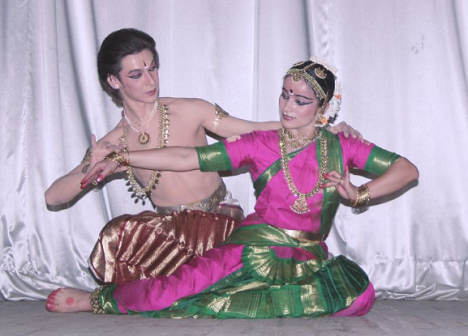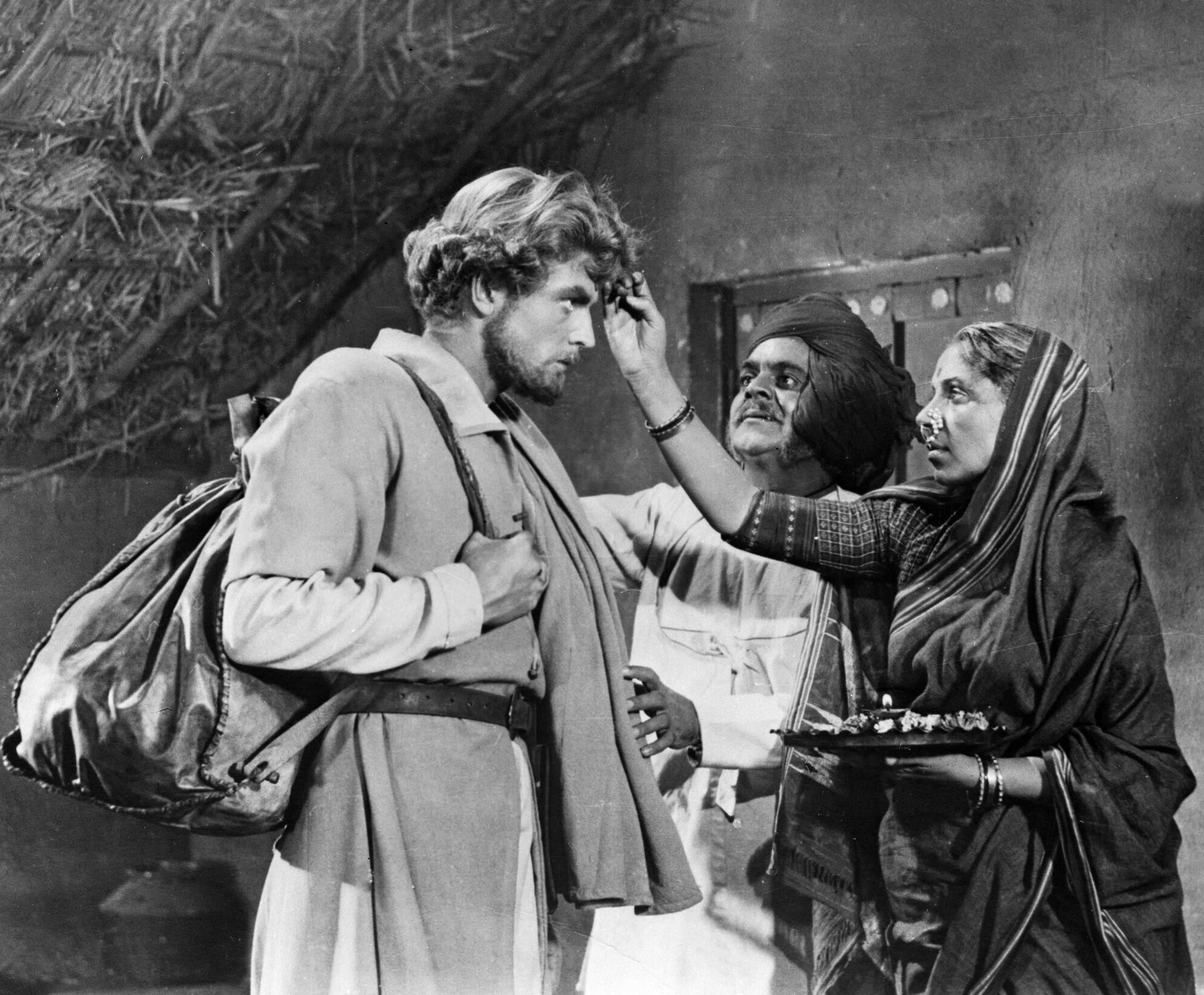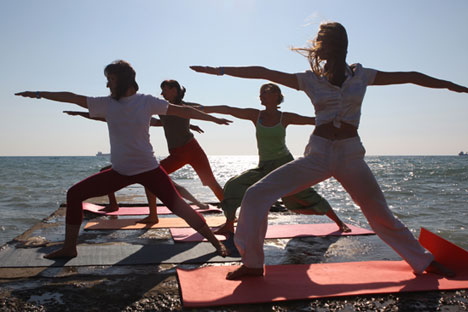Russian guru blazes Bharatanatyam trail

India has become a second home for Dmitry Zmeyev. Source: nrityas.ru
Dmitry Zmeyev is one of the pioneers in Russia of Bharatanatyam, an ancient Indian classical dance form. He is also inventor of an innovative approach of staging dance performances – a fascinating melange of Russian music and Indian choreography.
Zmeyev’s first tryst with Indian dance was through Indian cinema. It all began when his mother talked him into watching ‘Seeta and Geeta’. Initially reluctant, he couldn’t keep his eyes off Hema Malini and her masterful dance movements. It was through Hindi films that he fell in love with ‘Bharatanatyam’, although at that time he found it difficult to tell one dance style from another. Besides, a stereotype existed in Russia that Indian dances were only performed by women. But when the impressionable Russian saw Kamal Hassan perform, he was no longer hesitant.
“After I watched him perform, a revolution happened in my mind,” Dmitry confesses. “And that’s when I realised that this is more than a hobby for me. It’s my vocation, my life.”
Zmeyev then decided to take up Bharatanatyam with great enthusiasm and passion, enrolling at the Gandharva Mahavidyalaya in New Delhi in 1990. During his student years, Zmeyev was actively involved in various cultural programmes of the Russian Embassy in India, and several documentary films were made about him by Russian and Indian television channels.
He also enrolled at the Triveni Kala Sangam Institute and Theatre in April 1996, while still continuing his studies at the Gandharva Mahavidyalaya where he was learning under the guidance of Mrs. Jaya Lakshmi Ishwar, a well-known Bharatanatyam performer and exponent of the Kalakshetra Style. Under her tutelage, Zmeyev also learned the art of playing ‘Talam’, a percussion instrument used in Bharatanatyam as an accompaniment (Nattuvangam). He graduated with honours from the Gandharva Mahavidyalaya in October 1998, with a Bachelor of Arts Degree.
After his return to Moscow, the dancer has been performing and holding master-classes both in Russia and abroad. He is also often invited as jury member, special guest or presenter for various dance festivals. In 1999, he founded a school of Indian classical dance -- “Natya Rekha”, which became a member of the Nritya Sabha Foundation in 2003.
Foray into theatre
Zmeyev has successfully combined his passion for Bharatanatyam with acting and directing. He worked as an actor at the Stanislavsky theatre for eight years. He says his dancing skills help him develop as an actor because of the complex dramaturgy of the dance itself. Russian theatrical director Igor Yatsko was delighted when he saw Zmeyev perform Bharatnatyam because of the ‘compactness’ of the dance – music, rhythm and acting all in one.
As an experienced teacher, Zmeyev says it is not very easy for a Russian to study Bharatnatyam.
“The body of a European isn’t naturally fit for the basic Bharatnatyam position. I, for one, had to study this particular element for a whole year. Our knees are bent inwards. And Indians can easily turn their knees outwards because it’s a natural movement for them. In India people often sit on the floor, kids sit on their mother’s lap. So they can bend their knees flexibly,” he said.
The Russian demeanour is another stumbling block when it comes to learning the Indian classical dance. “Our people are a little reserved, they feel uncomfortable showing their feelings to the audience,” Zmeyev said. “But Bharatnatyam, as a classical dance style, is more than just physical movements, it’s also a theatrical performance. So bonding with the audience, making viewers part of the action is absolutely essential.”
The Russian teacher has invented a technique to help his students better understand the plot of the dance. He stages Indian dances to Russian music. For example, he used a song “I carried my grief,” performed by a legendary Soviet bard Vladimir Vysotsky and a Russian pop queen Alla Pugacheva, for his dance numbers, and it was success. Zmeyev believes that there are similar plots and characters in Indian epics and Russian folklore and, therefore, intertwining Indian and Russian elements is organic.
This new genre – Russian performance with Indian choreography – has turned out to be very popular in Russia. For the Russian audience, it becomes more than just a beautiful and exotic dance. Such performances really touch a chord.
Home away from home
After so many years in India, the country has become a second home for Zmeyev.
“Delhi is one of my favourite places in India,” he said nostalgically. “This is the place where I spent my young years, where my identity was shaped.”
Another one of his favourite places is Nainital. “It’s such a picturesque location. There are lotuses everywhere, and never in my life have I seen so many stars, they lighten the sky like lanterns.”
He fondly recalls his Indian friends and appreciates the friendliness and openness in the country.
“In India, if something is wrong with your car, everyone is willing to push your car, to help. Also, I love that people stuck in a traffic jam are looking out of their car windows and chatting. Can you imagine such a situation in Moscow?”
Such a laid back mentality has its shortcomings too, he admits, such as lack of punctuality. But it’s not such a big deal when there are a good many other things to admire about the country.
The article was first published in 2013.
All rights reserved by Rossiyskaya Gazeta.
Subscribe
to our newsletter!
Get the week's best stories straight to your inbox


